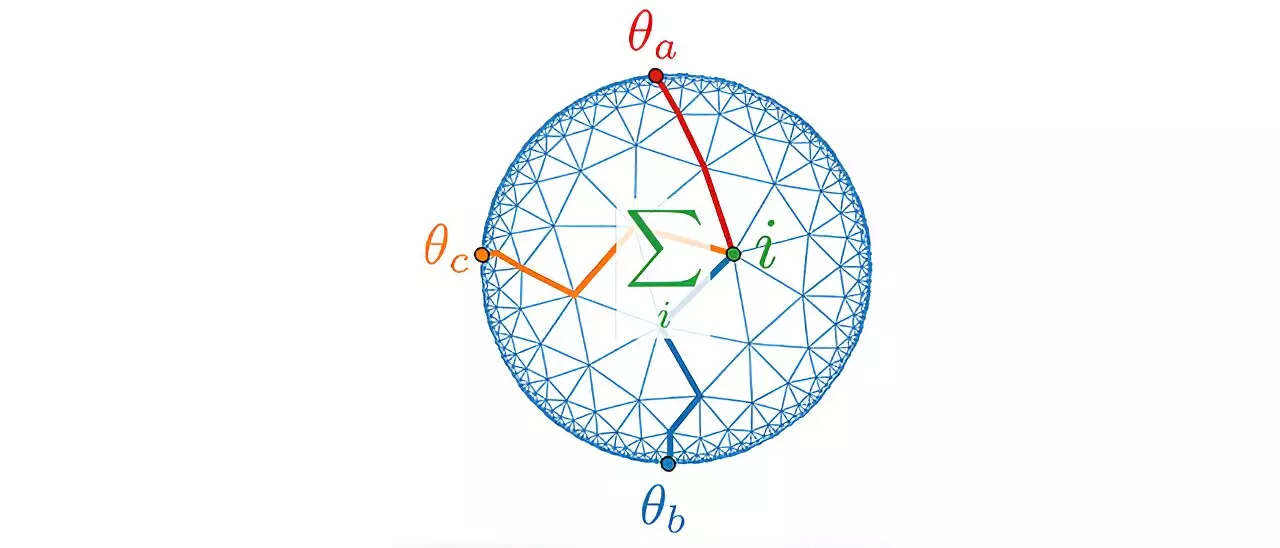For centuries, gravity has fascinated scientists, offering a profound glimpse into the workings of our universe. While we have made significant strides in understanding gravity over large scales—calculating planetary orbits, predicting tides, and launching spacecraft—its nature at microscopic levels remains elusive. The quantum realm presents intricate challenges, particularly when attempting to reconcile gravity with the principles of quantum mechanics. As Professor Johanna Erdmenger from the University of Würzburg highlights, grasping gravity’s quantum properties is essential for understanding cosmic phenomena like the Big Bang and black hole formations. This intersection of gravity and quantum mechanics beckons researchers to develop new theoretical frameworks that unify these seemingly disparate areas of physics.
Central to this endeavor is the AdS/CFT correspondence, a groundbreaking theory positing a duality between gravitational theories in higher-dimensional spaces and quantum field theories defined on their boundaries. This correspondence operates on the premise that the complexities of gravity can be translated into the language of quantum mechanics, thus providing a potentially simpler avenue for exploration. The term “AdS” refers to Anti-de-Sitter space, a unique curved geometry that contrasts traditional flat spacetime, whereas “CFT” denotes conformal field theory, which encompasses quantum systems whose characteristics remain invariant across scale.
Professor Erdmenger simplifies this complex concept, likening the relationship to a hologram that conveys a three-dimensional image through a two-dimensional medium. Within this framework, theories governing the dynamics of gravity can be modeled and interpreted using less complicated quantum approaches. However, despite its theoretical robustness, the practical validation of the AdS/CFT correspondence has posed significant challenges.
Recognizing the necessity of empirical validation, Professor Erdmenger’s research team has made commendable strides in designing a novel experimental setup that aims to test the predictions of the AdS/CFT correspondence. By utilizing a branched electrical circuit, the team has crafted a model that simulates curved spacetime, with electrical signals at each junction representing gravitational dynamics akin to those that occur throughout the fabric of spacetime.
Published in the prestigious journal *Physical Review Letters*, the research delineates a tantalizing connection between the theoretical predictions and the experimental observations derived from this circuit. The findings suggest that the behaviors observed at the boundary of the simulated spacetime align with those anticipated from within, affirming a key aspect of the AdS/CFT correspondence. This revelation not only satisfies a significant theoretical inquiry but also opens the door to broader implications for our understanding of fundamental forces in the universe.
The significance of this research extends well beyond pure theoretical interests. The innovative circuit designs developed by Erdmenger’s team represent a groundbreaking leap in both scientific inquiry and technological advancement. The application of quantum technology in these circuits holds promise for enhancing electrical signal transmission, reducing losses associated with conventional methods. By expertly mimicking the effects of spatial curvature, researchers could potentially revolutionize how electrical signals are managed, paving the way for more efficient devices and systems in various sectors.
This intersection of theoretical physics and technology highlights a growing trend within scientific research, where abstract theories can inspire pragmatic innovations. As we seek to deepen our understanding of forces that govern the universe—from the atomic to the cosmic—there lies the opportunity for groundbreaking advancements that could reshape our technological landscape as well.
As the Würzburg research team prepares to operationalize their experimental circuit, the anticipation builds around the outcomes and revelations that may arise from these tests. Furthermore, as they venture into this uncharted territory of quantum gravity, the continuing dialogue between theoretical predictions and empirical evidence will be critical. Uncovering the intricacies of gravitational phenomena at the quantum level is not merely a scientific pursuit; it is a quest to comprehend the fundamental architecture of reality itself.
The journey to demystify gravity’s behavior on microscopic scales is both ambitious and intriguing. The AdS/CFT correspondence stands as a testament to human ingenuity in grappling with the complexities of the universe. With ongoing research spearheaded by innovative scientists like Professor Johanna Erdmenger, we are poised to make remarkable advancements that bridge the realms of gravity and quantum mechanics, unraveling the mysteries that have puzzled us for generations.

